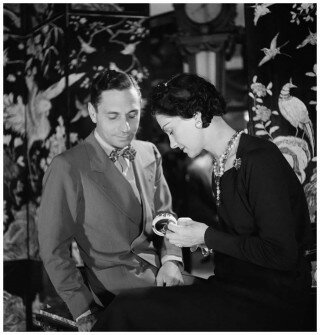CUT THE RIBBON, MISSY-MATHILDE DE MORNY
Posted on August 28, 2013 by Editorial Staff
Colette used to write her letters , lots of letters. “My Beloved Velvet” she wrote at the beginning of every single of it but Velvet was also known as Missy, or Monsieur le Marquis, or Le Chevalière, or Oncle Max. She was born Mathilde de Morny in 1863 and she was the last daughter of Duc de Morny, brother of Napoleon the third. She was a rebel, she needed to change her name and body for her entire life. In the beginning Mathilde tried hard to be “normal” and married Jaques Godart, le Marquis Belbeuf, in 1881, but it didn’t succeed (she divorced few years later). At that time, a woman in love with another woman, was no surprise and was quite well accepted. It was fashionable, it was really “Belle Epoque”. But Missy, Missy she was wearing a business suit, short hair and she was a cigar chain smoker . Missy underwent an hysterectomy and removed her breast. Missy was viril, strong and rich and served as Pygmalion to many women in Paris including her love-friend Colette for which she bought Villas, produced comedies and made folies. Missy, beloved Missy, she was everything but common. Missy that tried to be a sculptor, a writer and a painter. Missy, that in 1907 , under the anagram of Yssim, acted with Colette in a Pantomime called Rêve d’Égypte” at the Moulin Rouge. Missy, never frightened, never scared, always ready to be herself. Missy that in the end of May 1944 tried to commit hara-kiri but was saved. Missy, her wealthy was gone and she dyed on June 29, 1944 by putting her head in the gas stove oven. Did she cut some ribbons? She cut boundaries not only ribbons. She lived wild and proud. She was Missy.








































 Copyright © The Harlow 2019
Copyright © The Harlow 2019